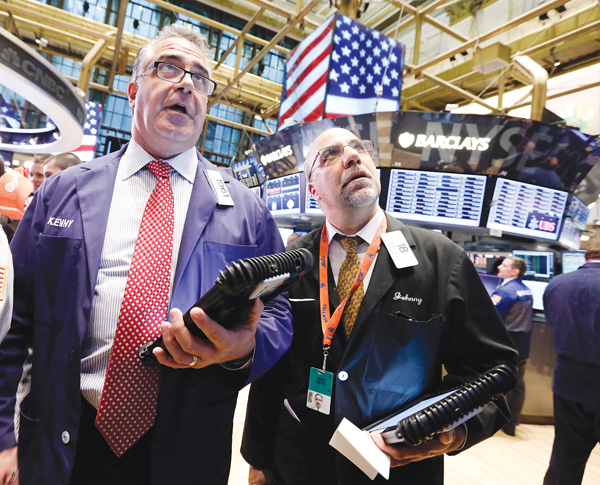WALL STREET Safe is sexy, say stock investors


Traders Kenneth Polcari, left, and John Liotti work on the floor of the New York Stock Exchange. They were at work Friday.
Associated Press
NEW YORK
For stock investors, safe is the new sexy.
Health-care companies such as Johnson & Johnson and Pfizer are surging as investors buy stocks that give them what they used to get from bonds — a steady investment with a regular payout. Consumer staples stocks such as Proctor & Gamble and utilities are also charging higher.
These stocks — which offer good dividends and can grow regardless of the state of the economy — show that investors are hungry for more income, but aren’t ready to take on too much risk.
“Defensive sectors, especially those that have these attractive dividend yields have been the investment of choice for those that are looking to dip their toes back into the water,” says Stephen Parker, a portfolio manager at JPMorgan Private Bank.
The Federal Reserve’s efforts to stimulate the U.S. economy — holding interest rates close to zero and spending $85 billion a month on bond purchases — have pushed bond yields so low that investors are being forced to look elsewhere to find income.
At the same time, people are getting comfortable with the idea of holding stocks again after being burnt by the market collapse that followed the financial crisis and the onset of the Great Recession. The Standard & Poor’s 500 index is up 135 percent from its recession low March 9, 2009. Housing is recovering, companies are hiring and corporate profits are strong.
“Investors are tired of missing out on the rally that we’ve seen in stocks but, they’re not willing to go full in,” says Brad Sorensen, director of market and sector research at Charles Schwab. With so-called defensive stocks, people are “hedging their bets on the stock market a little bit.”
Stock mutual funds took in $38.2 billion of net deposits in the first three month of the year, compared with an outflow of $4.6 billion last year, according to Lipper fund flow data.
The demand has contributed to the stock market’s jump in 2013. The Dow Jones industrial average is up 13 percent while S&P 500 has climbed 11 percent.
Leading the gains are health-care stocks. They have climbed almost 20 percent followed by consumer staples at 16.5 percent and utilities at 15.3 percent. Meanwhile, the industries you would expect to do well during a recovery are lagging. Energy companies, which often lead the pack during times of growth, have gained 8.1 percent this year.
 43
43
